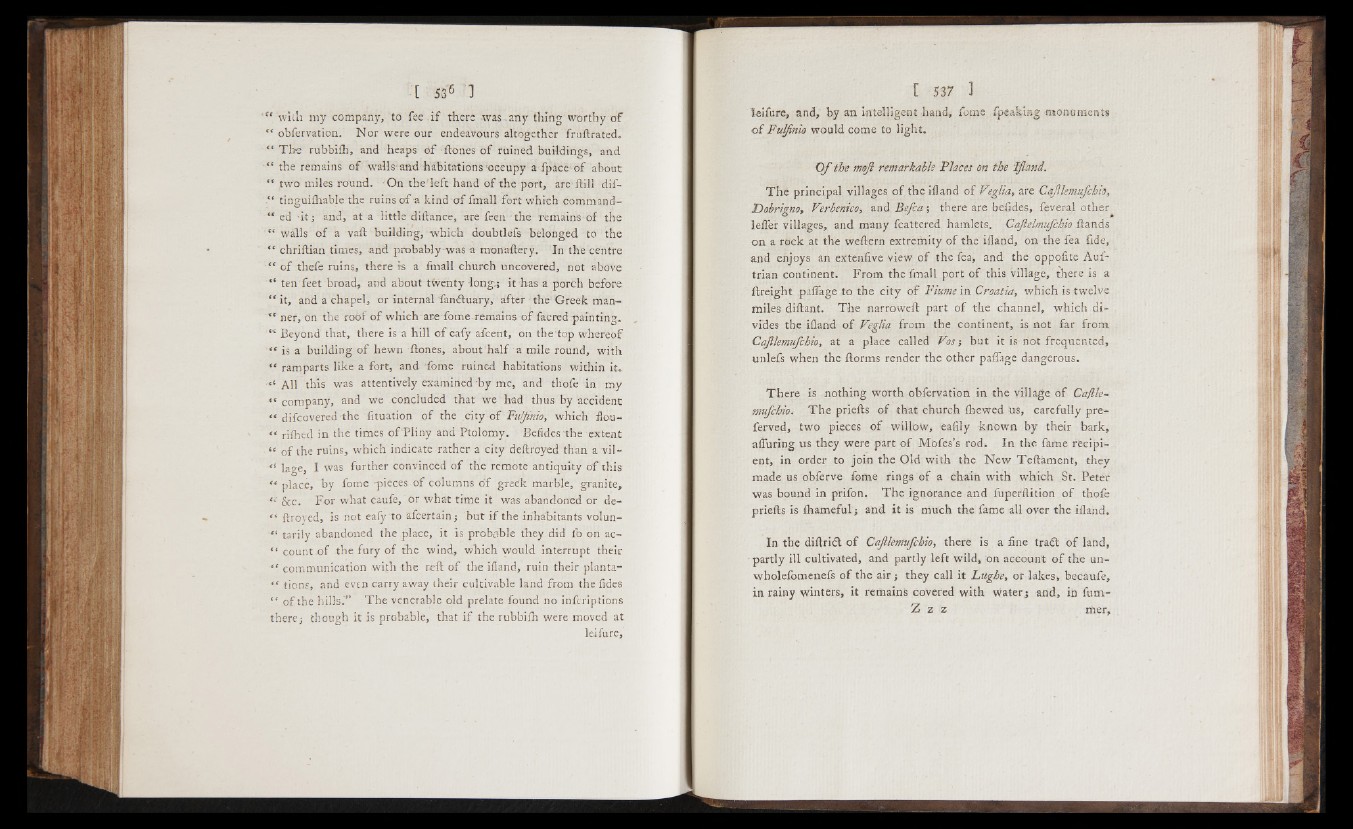
“ wii'i my company, to fee .i f there was.any thing'worthy o f
” obfervation. Nor were our endeavours altogether fruflrated.
“ The ruhbiih, and heaps o f Rones o f ruined buildings, and
“ the remains of walls-and habitations'occupy a fpaceof about
“ two miles round. On the'left hand of the port, arefiill dif-
.“ tinguifliable the ruins o f a kind o f fmall fort which command-
“ ed it; and, at a little diflance, are feen the remains©! the
“ walls of a vaR building, which doubtlefs belonged to the
“ chriRian times, and probably was a monaflery. In the centre
“ of thefe ruins, there is a fmall church uncovered, not above
“ ten feet broad, and about twenty long.; it has a porch before
“ it, and a chapel, or internal fanituary, after the Greek man-
■ ner, on the roof o f which are feme remains of facred painting.
“ Beyond that, there is a hill o f eafy afcent, on the top whereof
“ is a building of hewn Rones, about half a mile round, with
“ ramparts like a fort, and Tome ruined habitations within it.
‘ ‘ All this was attentively examined by me, and thofe in my
“ company, and we concluded that we had thus by accident
“ difcovered the fituation o f the city o f Fulfinio, which flou-
“ riflied in the times of'Pliny and Ptolomy. Befides the extent
“ of the ruins, which indicate rather a city deflroyed than a vil-
“ lage, 1 was further convinced o f the remote antjquity of this
“ place, by fome -pieces of columns o'f greek marble, granite,
" &c. For what caufe, or what time it was abandoned or de-
“ Rroyed, is not eafy "to afcertain; but i f the inhabitants volun-
“ tarily abandoned the place, it is probable they did fo on ac-
“ count o f the fury of the wind, wbich would interrupt their
“ communication with the reR o f the ifland, ruin their planta-
“ tions, and even carry away their cultivable land from the fides
“ o f the hills.” The venerable old prelate found no infcriptions
there; though it is probable, that i f the rubbifli were moved at
leiRtre,
t S 3 7 3
lei fare, and, by an intelligent hand., fome fpgaking monuments
o f Fulfinio would come to light.
O f the mofi remarkable Places on the ‘Ifiand.
The principal villages o f the ifland o f Veglia, are Cajllemufchio,
Dobrigno, Verbenico, and Befca -, there are befides, feveral other
lefler villages, and many feattered hamlets. Cafielmufchio Rands
on a rock at the weRern extremity of the ifland, on the fea fide,
and enjoys an extenfive view o f the fea, and the oppofite Auf-
trian continent. From the fmall port o f this village, there is a
Rreight paflage to the city o f Flume in Croatia, which is twelve
miles diflant. The narrowefl part of the channel, which divides
the ifland of Veglia from the continent, is not far from
Cajllemufchio, at a place called Vos; but it is not frequented,
unlefs when the florms render the other paflage dangerous.
There is nothing worth obfervation in the village o f Caflle-
mufebio. The prieRs o f that church fliewed us, carefully prefer
ved, two pieces o f willow, eafily known by their bark,
affuring us they were part of Mofes’s rod. In the fame recipient,
in order to join the Old with the New TeRament, thev
made us obferve feme rings of a chain with which St. Peter
was bound in prifon. The ignorance and fuperflition o f thofe
priefls is fliameful; and it is much the fame all over the ifland.
In the diflridl o f Cajllemufchio, there is a fine trait o f land,
partly ill cultivated, and partly left wild, on account o f the un-
wholefomenefs o f the air; they call it Lugbe, or lakes, becaufe,
in rainy winters, it remains covered with water; and, in fum-
Z z z riier,